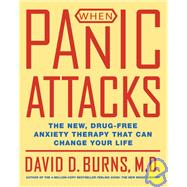
DAVID BURNS, M.D., is clinical associate professor of psychiatry and behavioral sciences at the Stanford University School of Medicine, and visiting scholar at Harvard Medical School. His bestselling book, Feeling Good: The New Mood Therapy, has sold more than four million copies worldwide, and he conducts workshops around the world for healthcare professionals and laypeople alike. He lives in Los Altos Hills, California.
| Introduction | 1 | (6) | |||
|
|||||
|
7 | (24) | |||
|
31 | (9) | |||
|
40 | (7) | |||
|
47 | (17) | |||
|
64 | (12) | |||
|
76 | (23) | |||
|
|||||
|
99 | (9) | |||
|
108 | (19) | |||
|
127 | (6) | |||
|
133 | (11) | |||
|
144 | (27) | |||
|
171 | (20) | |||
|
191 | (10) | |||
|
201 | (8) | |||
|
209 | (12) | |||
|
221 | (13) | |||
|
234 | (17) | |||
|
|||||
|
251 | (17) | |||
|
268 | (17) | |||
|
285 | (28) | |||
|
|||||
|
313 | (20) | |||
|
|||||
|
333 | (31) | |||
|
364 | (25) | |||
|
389 | (22) | |||
| References | 411 | (4) | |||
| Your Anxiety Toolkit | 415 | (22) | |||
| Index | 437 |
The New copy of this book will include any supplemental materials advertised. Please check the title of the book to determine if it should include any access cards, study guides, lab manuals, CDs, etc.
The Used, Rental and eBook copies of this book are not guaranteed to include any supplemental materials. Typically, only the book itself is included. This is true even if the title states it includes any access cards, study guides, lab manuals, CDs, etc.
Excerpted from When Panic Attacks: The New, Drug-Free Anxiety Therapy That Can Change Your Life by David D. Burns
All rights reserved by the original copyright owners. Excerpts are provided for display purposes only and may not be reproduced, reprinted or distributed without the written permission of the publisher.